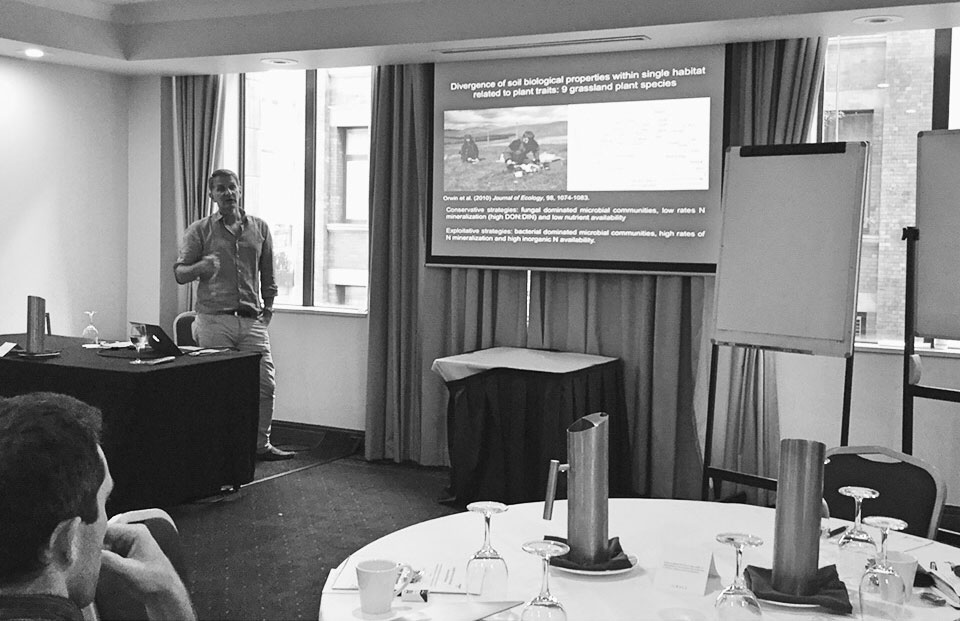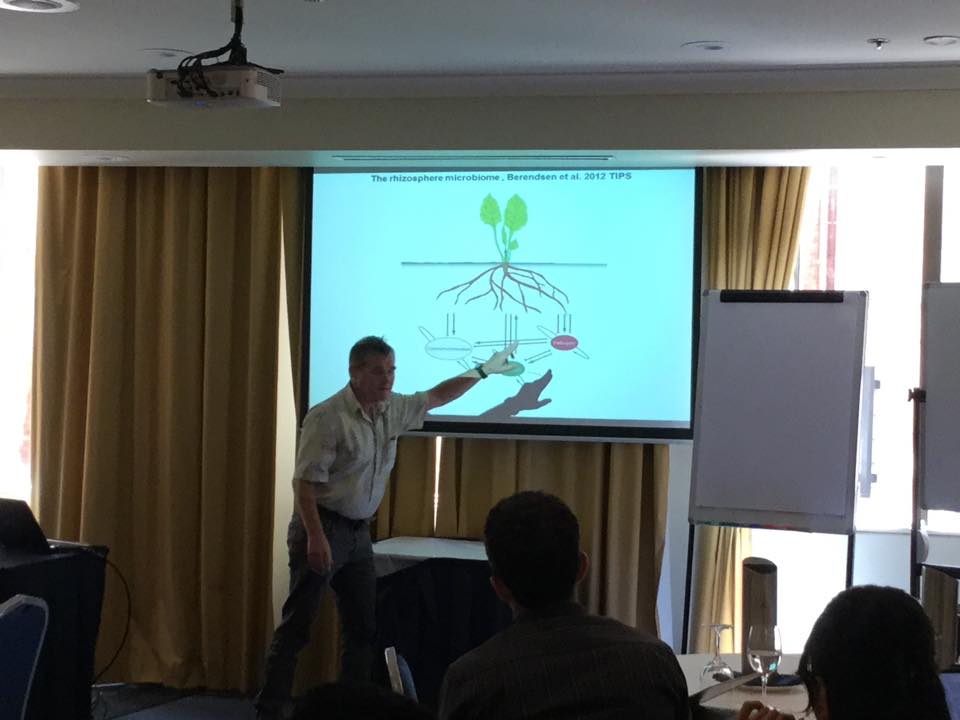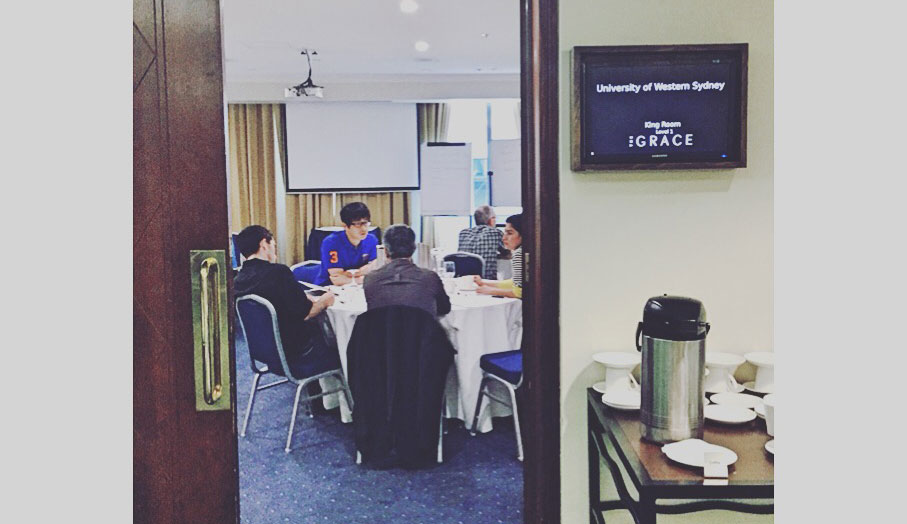Harnessing The Power Of The Soil's Rhizosphere

By Jasmine Grinyer - Senior Research Officer (Rural Industries)
In October, 2015 the Global Centre for Land Based Innovation at Western Sydney University hosted an international workshop "Harnessing rhizosphere-soil-microbial interactions for increasing farm productivity and resilience of farming systems." This workshop was partly supported by the Cotton Research and Development Corporation (CRDC).
Approximately 20 international and national experts from the Netherlands, US, China, the UK and Australia were in attendance; discussing a range of topics including rhizosphere interactions, plant productivity, root traits and functions, soil health structure and how these can be exploited to enhance farm productivity and resilience.
The importance of rhizosphere interactions
The rhizosphere is the region directly surrounding plant roots; it contains root secretions and a highly diverse range of microorganisms and soil fauna. Bacteria and fungi contained within the rhizosphere are directly linked to plant productivity. A bi-directional dialogue occurs where plants provide carbon to the rhizosphere microbes, and microbes in turn provide access to nutrients (including nitrogen and phosphorus) and resistance to soil borne diseases.
These rhizosphere and soil health workshops are key to increasing productivity and maintaining the resilience of farming systems, but also to keep industries updated on the status of research knowledge and how this can be harnessed in the future.
Why harness rhizosphere interactions?
It is estimated that crop productivity can be increased by up to 50 per cent by utilising plant varieties that harness the rhizosphere (and associated microbial interactions), in combination with good soil health. An increase in crop productivity of this scale is essential to supply the growing human population and the increasing demand for food and fibre over the coming decades, while maintaining profitability for farming businesses. The workshop participants were set the following challenges during the two-day workshop:
- Identifying currently available rhizosphere knowledge that can be used to increase farm productivity and resilience of farming systems.
- Determine the techniques needed to manipulate soil-root-microbial interactions for improved plant-water and nutrient-use efficiency, and improved disease resistance.
- Identify knowledge gaps and key components to be addressed to harness rhizosphere-microbial interactions.
- Develop a global consortium to address these important issues to expedite technological advances in this field.

Professor Richard Bardgett (Manchester University, UK) giving his presentation.
Day one started with a welcome speech by Professor Brajesh Singh, Director, Global Centre for Land-Based Innovation. He presented the agenda of the workshop and the anticipated, targeted outcomes. This was followed by a presentation from Professor Richard Bardgett (University of Manchester, UK) on "Rhizosphere interaction, plant productivity and soil carbon." Richard highlighted the current knowledge surrounding the rhizosphere and future challenges needed to overcome predicted food/ fibre shortages.
Professor Yong-Guan Zhu from the Chinese Academy of Science provided an update on the status of rhizosphere-microbial interaction research in China and the massive research investment made by the Chinese government in this field.
A global expert on disease management, Professor Peter Bakker (Utrecht University, Netherlands) identified approaches to exploit the rhizosphere microbiome for disease control, while Professor Karl Ritz (University of Nottingham, UK) highlighted how rhizosphere interactions determine soil structural health and the new revolution in technology to visualise these interactions.

Professor Peter Bakker giving his presentation on rhizosphere microbiomes and disease control.
The final presentation came from Professor David Eissentat (Pennsylvania State University, US) on linking root traits with root functions with the aim of improving crop performance.
Delegates were then divided into subgroups to identify key questions within each of the above challenges.
On day two, the first half of the morning focused on identifying solutions for key challenges which could be addressed in the short to medium term. The impacts of land management on crop productivity were considered, in addition to disease loads, the resilience to soil perturbation and variable climate conditions.
An overarching theme that emerged from the workshop was the central role of the interaction between plant roots and soil microbes (fungi and bacteria) in determining how crop plants react to different stressors. Certain classes of soil microbes, known as 'beneficial' microbes, are responsible for recycling and altering nutrients into a format usble by plants; they act as nutrient and signal conduits between plants, they break down or immobilise toxic compounds and they boost plant immunity to diseases.
If we could encourage and harness this population of microbes using simple changes to land management practices or through new crop varieties or chemicals, we would see a significant, sustainable increase in the health and productivity of our crops. The delegates briefly discussed a path to establish a global consortium to exploit current knowledge into technological development.

Workshop discussion groups on Sunday morning at the Grace Hotel.
This discussion was extremely important given Europe, US and China have invested several hundred million dollars into research on this topic. It was argued that by aligning Australian work with these international partners, we could build on available knowledge which will keep the cost and time required for technology development to a minimum.
The detailed outcomes of this workshop will be shared with relevant agencies including RDCs and the wider scientific community. Overall, the workshop was a great success and was able to identify key challenges and possible solutions.
It also identified knowledge which can be harnessed in the short-term and longer-term outcomes which require further research.
Allan Williams from the Cotton Research and Development Corporation (CRDC) said "Such workshops (rhizosphere and soil health) are key for further increasing productivity and maintaining resilience of farming systems, but also keep industries updated on the status of research knowledge and how this can be harnessed in the future."
According to Professor Brajesh Singh, "The workshop delivered its desired outcomes and identified knowledge that can be harnessed in short, medium, and long-term. It also identified challenges and emphasised the need for a global collaboration to address key issues which will serve both the agricultural industry and Australian researchers moving forward on this issue."
With thanks to the Cotton Research and Development Corporation.
